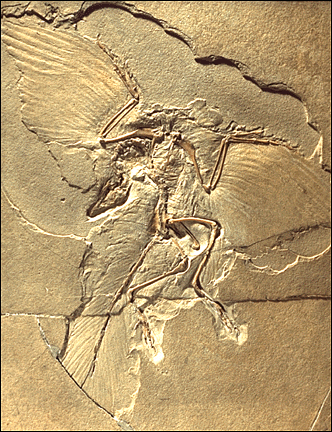Tikémi
lambeosaure


Nombre de messages : 193
Age : 40
Localisation : Bruxelles
Emploi : doctorante
Loisirs : lecture, puzzles
Date d'inscription : 07/06/2006
 |  Sujet: Mahakala omnogovae, le dromaeosauridae le plus basal Sujet: Mahakala omnogovae, le dromaeosauridae le plus basal  Ven 7 Sep - 15:21 Ven 7 Sep - 15:21 | |
| Malgré qu'il soit de la Djadokhta Formation (Campanien) en Mongolie, il s'agit du Dromaeosauridae le plus basal découvert à ce jour. Il mesurait environ 70 cm de long, et un crâne partiel et divers os post-crâniens appartenant un individu presque adulte ont été retrouvés. Sa petite taille oblige les paléontologues à réviser un peu les scénarios évolutifs concernant l'apparition du vol chez les oiseaux. pdf disponible ici : http://www.sciencemag.org/cgi/reprint/317/5843/1378.pdfPlus de détails ici également : http://www.eurekalert.org/pub_releases/2007-09/ncsu-hof090507.phphttp://www.livescience.com/animals/070906_mini_dinosaur.html (avec reconstitution et cladogramme) Turner, Pol, Clarke, Erickson and Norell, 2007. A Basal Dromaeosaurid and Size Evolution Preceding Avian Flight. Science 317:1378-1381.Abstract: Fossil evidence for changes in dinosaurs near the lineage leading to birds and the origin of flight has been sparse. A dinosaur from Mongolia represents the basal divergence within Dromaeosauridae. The taxon’s small body size and phylogenetic position imply that extreme miniaturization was ancestral for Paraves (the clade including Avialae, Troodontidae, and Dromaeosauridae), phylogenetically earlier than where flight evolution is strongly inferred. In contrast to the sustained small body sizes among avialans throughout the Cretaceous Period, the two dinosaurian lineages most closely related to birds, dromaeosaurids and troodontids, underwent four independent events of gigantism, and in some lineages size increased by nearly three orders of magnitude. Thus, change in theropod body size was not unidirectional, leading to flight’s origin. | |
|
